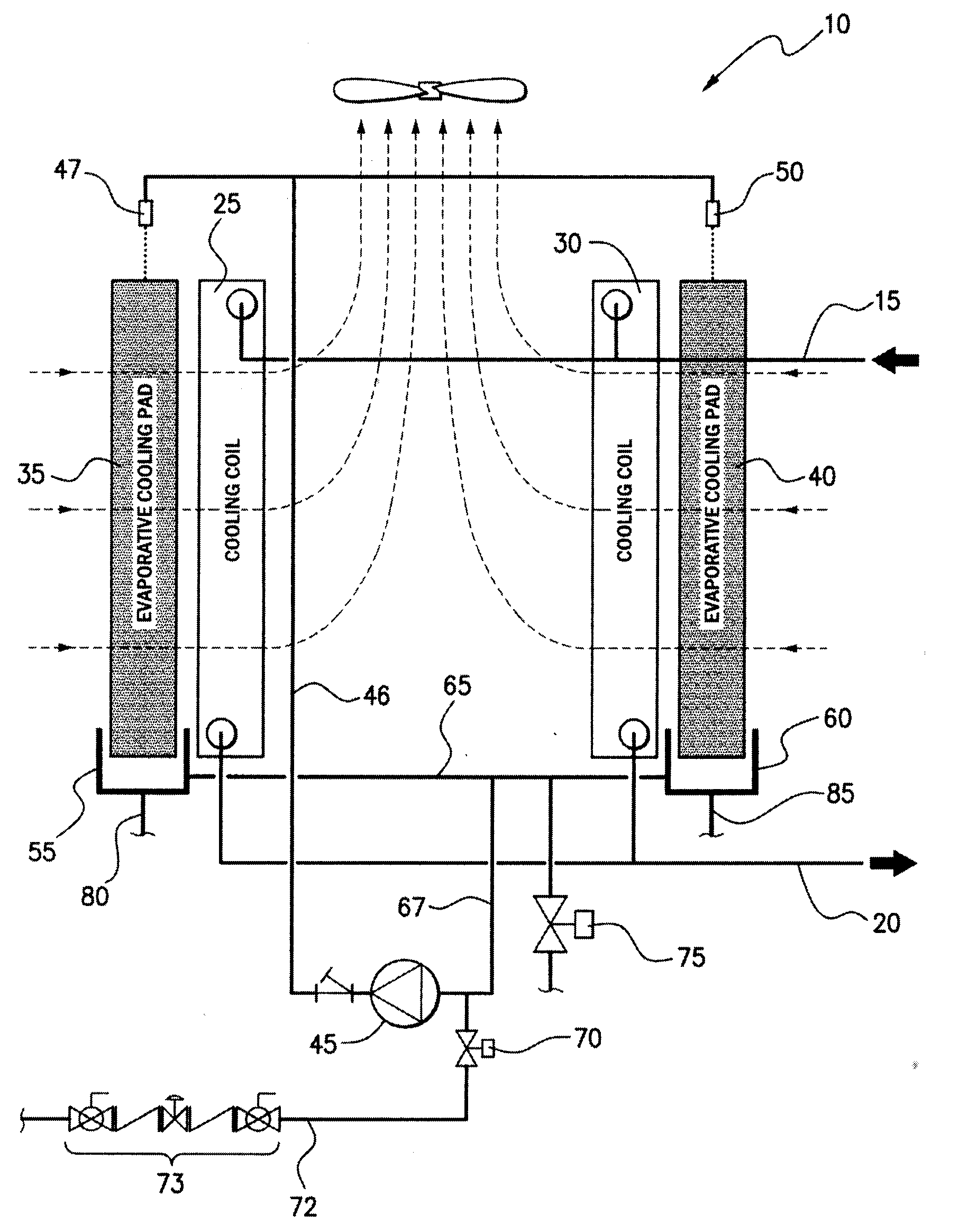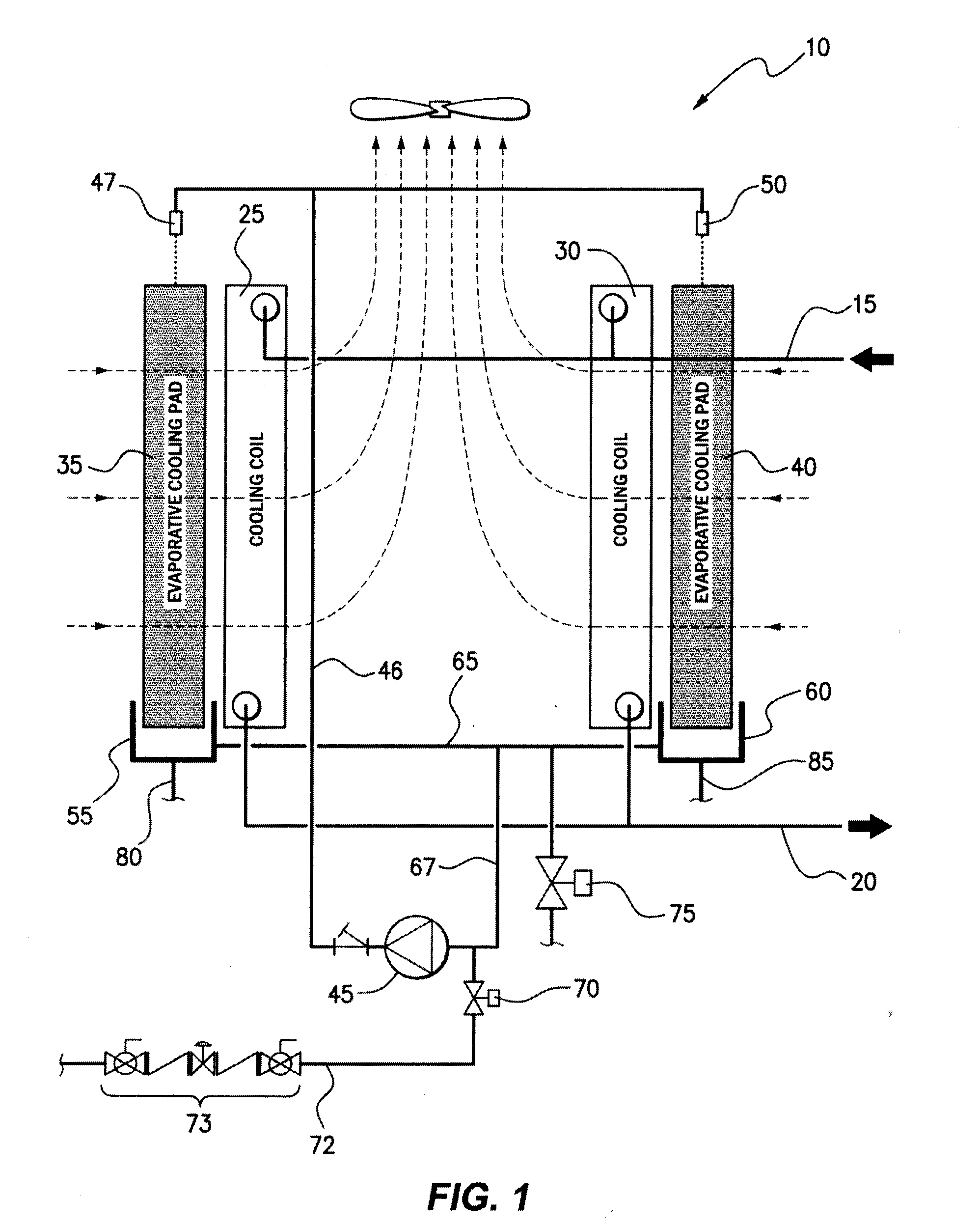System and method of wetting adiabatic material
a technology of adiabatic material and wetting process, which is applied in the field of system and method of wetting adiabatic material, can solve the problems of wasting a large amount of water during the dumping process, requiring a relatively long start-up period, and a relatively long period of time to fill the trough, so as to reduce the amount of wasted water, reduce the time required to saturate the moisture absorbent material from a dry condition, and reduce the amount of wasted
- Summary
- Abstract
- Description
- Claims
- Application Information
AI Technical Summary
Benefits of technology
Problems solved by technology
Method used
Image
Examples
Embodiment Construction
[0041]With reference to FIG. 1, a diagrammatic representation of an existing cooling system arrangement is provided wherein cooling fluid is passed through cooling coils (25, 30) through an inlet conduit (15) and subsequent to passing through the cooling coils (25, 30) is emitted through an outlet conduit (20). The cooling fluid may be water or a refrigerant fluid that is used to transfer thermal energy such as Freon. Further, where the cooling fluid is water, additives such as Glycol may be added to improve the thermal characteristics of the resulting cooling of fluid. The cooling fluid is supplied to the cooling coils (25, 30) through the inlet conduit (15) for the purpose of cooling the fluid and during the passage through the cooling coils (25, 30) thermal energy is extracted from the cooling fluid such that the fluid emitted through the outlet conduit (20) has a substantially lower temperature and hence may be returned to the cooling apparatus that uses the fluid for the purpos...
PUM
 Login to View More
Login to View More Abstract
Description
Claims
Application Information
 Login to View More
Login to View More - R&D
- Intellectual Property
- Life Sciences
- Materials
- Tech Scout
- Unparalleled Data Quality
- Higher Quality Content
- 60% Fewer Hallucinations
Browse by: Latest US Patents, China's latest patents, Technical Efficacy Thesaurus, Application Domain, Technology Topic, Popular Technical Reports.
© 2025 PatSnap. All rights reserved.Legal|Privacy policy|Modern Slavery Act Transparency Statement|Sitemap|About US| Contact US: help@patsnap.com



